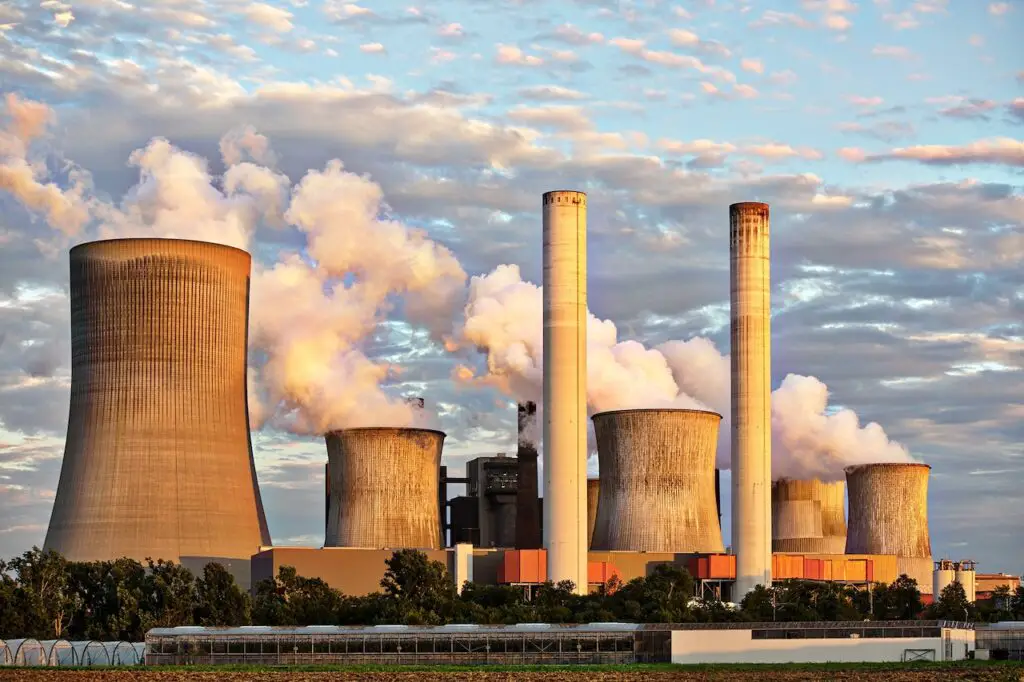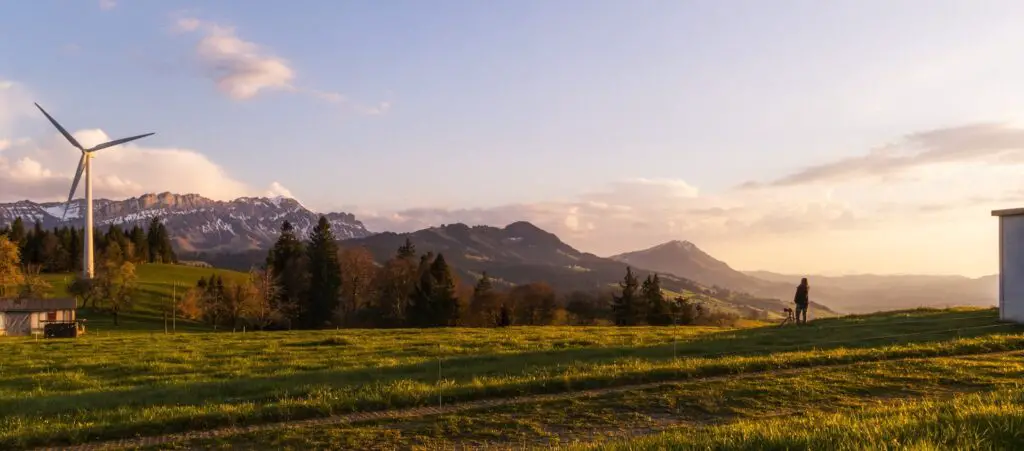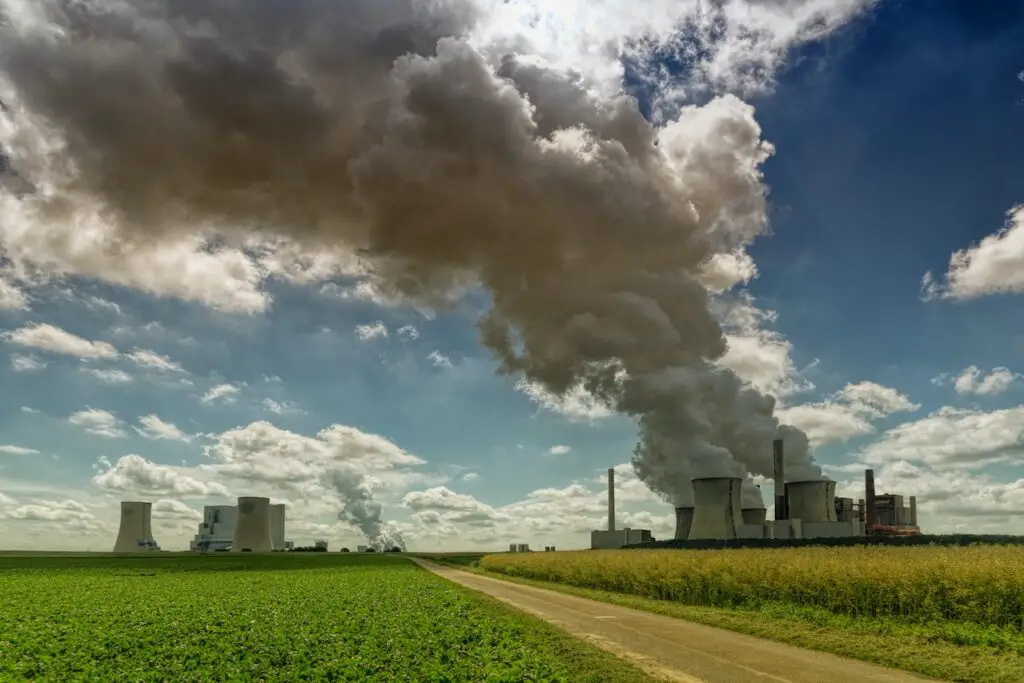Nuclear energy is often touted as a green alternative to fossil fuels due to its ability to generate electricity without emitting greenhouse gases. While it is true that nuclear power is carbon neutral, it is not entirely accurate to label it as “green.”
One of the main reasons why nuclear energy is not considered green is the issue of nuclear waste. The radioactive waste produced by nuclear power plants is highly toxic and can remain hazardous for thousands of years. Additionally, the mining and processing of uranium, the fuel used in nuclear reactors, can have negative environmental impacts.

Furthermore, nuclear power plants are not immune to accidents, with the Chernobyl and Fukushima disasters serving as stark reminders of the potential dangers. While nuclear energy may be a viable option for reducing carbon emissions, it is important to consider the environmental and safety concerns associated with it.
What is Nuclear Energy?
Nuclear energy is the energy released from the nucleus of an atom. It is harnessed through a process called nuclear fission, where the nucleus of an atom is split into two smaller nuclei, releasing a large amount of energy in the process. This energy can be used to generate electricity through the use of nuclear power plants.
Nuclear energy is often touted as a carbon-neutral energy source, as it does not produce carbon dioxide during the energy generation process. However, this does not mean that nuclear energy is entirely green. The process of mining and refining uranium, the fuel used in nuclear reactors, has significant environmental impacts. Additionally, the disposal of nuclear waste is a major concern, as it can remain radioactive for thousands of years.
Despite these concerns, nuclear energy remains an important source of energy for many countries around the world. It is a reliable and relatively low-cost source of energy, and has the potential to help reduce greenhouse gas emissions. However, it is important to carefully consider the environmental impacts of nuclear energy, and to explore alternative energy sources as well.
Carbon Neutral vs. Green Energy
Nuclear energy is often touted as a carbon-neutral energy source because it does not produce greenhouse gas emissions during operation. However, it is not considered a green energy source due to the environmental impact of nuclear waste and the potential for catastrophic accidents.
Carbon-neutral energy sources are those that do not release carbon dioxide or other greenhouse gases during operation. Examples of carbon-neutral energy sources include nuclear, hydropower, and wind power. These energy sources are often seen as a way to reduce greenhouse gas emissions and combat climate change.
Green energy sources, on the other hand, are those that have a minimal impact on the environment and do not contribute to climate change. Examples of green energy sources include solar power, geothermal energy, and biomass energy. These energy sources are often seen as more sustainable and environmentally friendly than carbon-neutral sources.
While nuclear energy is carbon-neutral, it is not considered a green energy source due to the environmental impact of nuclear waste and the potential for catastrophic accidents. The disposal of nuclear waste is a major environmental concern, as it can remain radioactive for thousands of years and pose a threat to human health and the environment. Additionally, the risk of a nuclear accident, such as the Chernobyl disaster or the Fukushima disaster, highlights the potential dangers of nuclear energy.
Overall, while nuclear energy may be carbon-neutral, it is not considered a green energy source due to the environmental risks and impact of nuclear waste. As the world continues to seek out sustainable and environmentally friendly energy sources, it is important to consider both the carbon footprint and the overall environmental impact of different energy sources.
The Environmental Impact of Nuclear Energy
Nuclear energy is often touted as a clean and green energy source due to its carbon-neutral nature. However, the reality is that nuclear energy is not entirely green and has several environmental impacts that cannot be ignored.
One of the most significant environmental impacts of nuclear energy is the production of nuclear waste. Nuclear waste is highly radioactive and can remain hazardous for thousands of years. Proper disposal of nuclear waste is crucial to prevent contamination of the environment and harm to humans and wildlife.
In addition to nuclear waste, the mining and processing of uranium, the fuel used in nuclear reactors, can also have adverse environmental impacts. Uranium mining can contaminate soil and water with heavy metals and radioactive materials, leading to health risks for nearby communities and wildlife.
Furthermore, nuclear power plants require large amounts of water for cooling, which can have negative effects on aquatic ecosystems. The discharge of warm water from nuclear power plants can cause thermal pollution, which can harm fish and other aquatic life.
While nuclear energy is carbon-neutral and can help reduce greenhouse gas emissions, its environmental impacts cannot be ignored. It is essential to weigh the benefits and drawbacks of nuclear energy carefully and consider alternative energy sources that may have fewer environmental impacts.
Challenges with Nuclear Energy
Despite its carbon neutrality, nuclear energy is not considered a green energy source due to several challenges it faces.
Firstly, nuclear energy produces radioactive waste, which is extremely hazardous to human health and the environment. The disposal of this waste is a major challenge, as it remains radioactive for thousands of years and requires safe storage and containment.
Secondly, nuclear energy facilities are expensive to build and maintain, which makes it difficult for developing countries to adopt nuclear energy as a primary source of power. Additionally, the construction of nuclear power plants requires significant amounts of energy and resources, which can have a negative impact on the environment.
Thirdly, nuclear energy facilities pose a risk of accidents, which can have catastrophic consequences. The Chernobyl and Fukushima disasters are examples of the devastating impact of nuclear accidents, which can result in loss of life, long-term health effects, and environmental damage.
Finally, nuclear energy is not a renewable energy source, as it relies on the mining and processing of uranium, which is a finite resource. The extraction of uranium can have negative environmental and social impacts, including habitat destruction and displacement of indigenous communities.
In conclusion, while nuclear energy is carbon neutral, it faces several challenges that prevent it from being considered a green energy source. The management of radioactive waste, high costs, risk of accidents, and reliance on finite resources are all factors that must be considered when evaluating the sustainability of nuclear energy.
Conclusion
After examining the evidence, it is clear that nuclear energy is carbon neutral, meaning it does not emit greenhouse gases during operation. However, it is not considered a green source of energy due to the potential risks associated with nuclear accidents and the long-term storage of radioactive waste.
While some argue that nuclear energy is a necessary component in reducing carbon emissions and combating climate change, others argue that the potential risks outweigh the benefits. It is important for policymakers to carefully consider the trade-offs and make informed decisions about the role of nuclear energy in our energy mix.
Ultimately, the decision of whether or not to pursue nuclear energy as a source of power is a complex one that requires careful consideration of a variety of factors. While nuclear energy may provide a solution to our energy needs in the short term, it is important to remember the potential long-term consequences and to continue exploring alternative sources of renewable energy.




